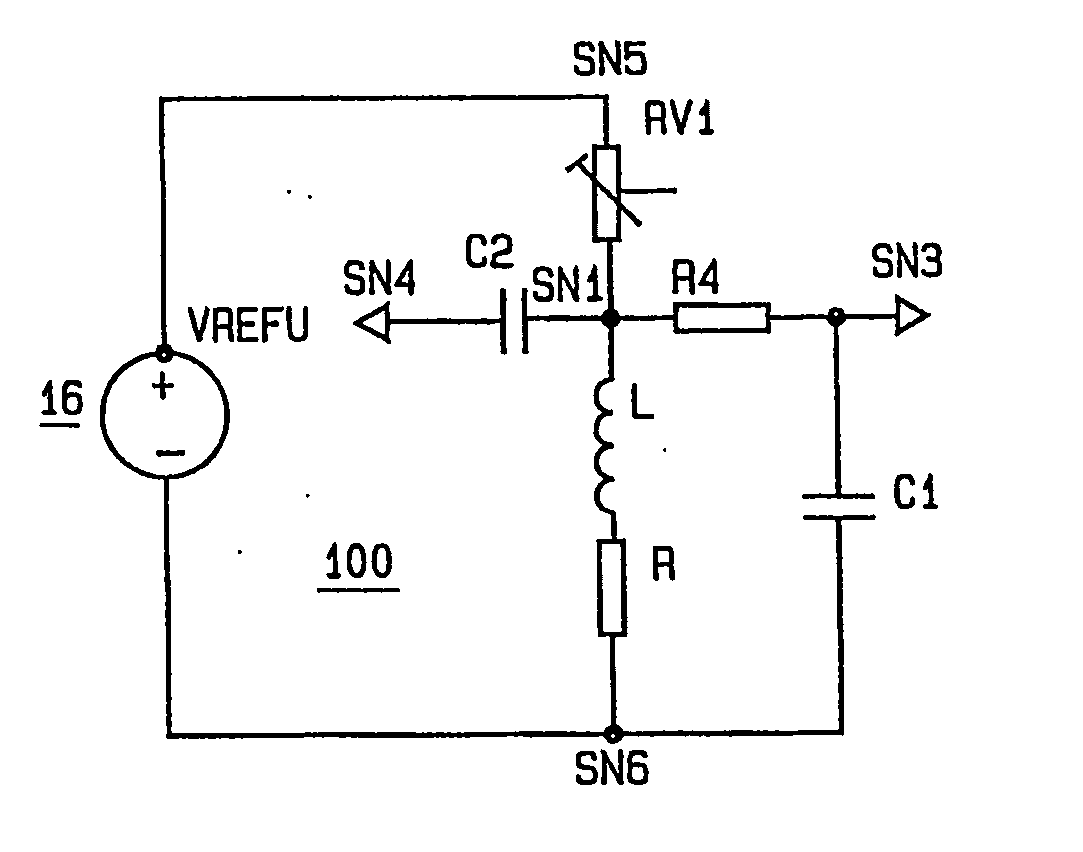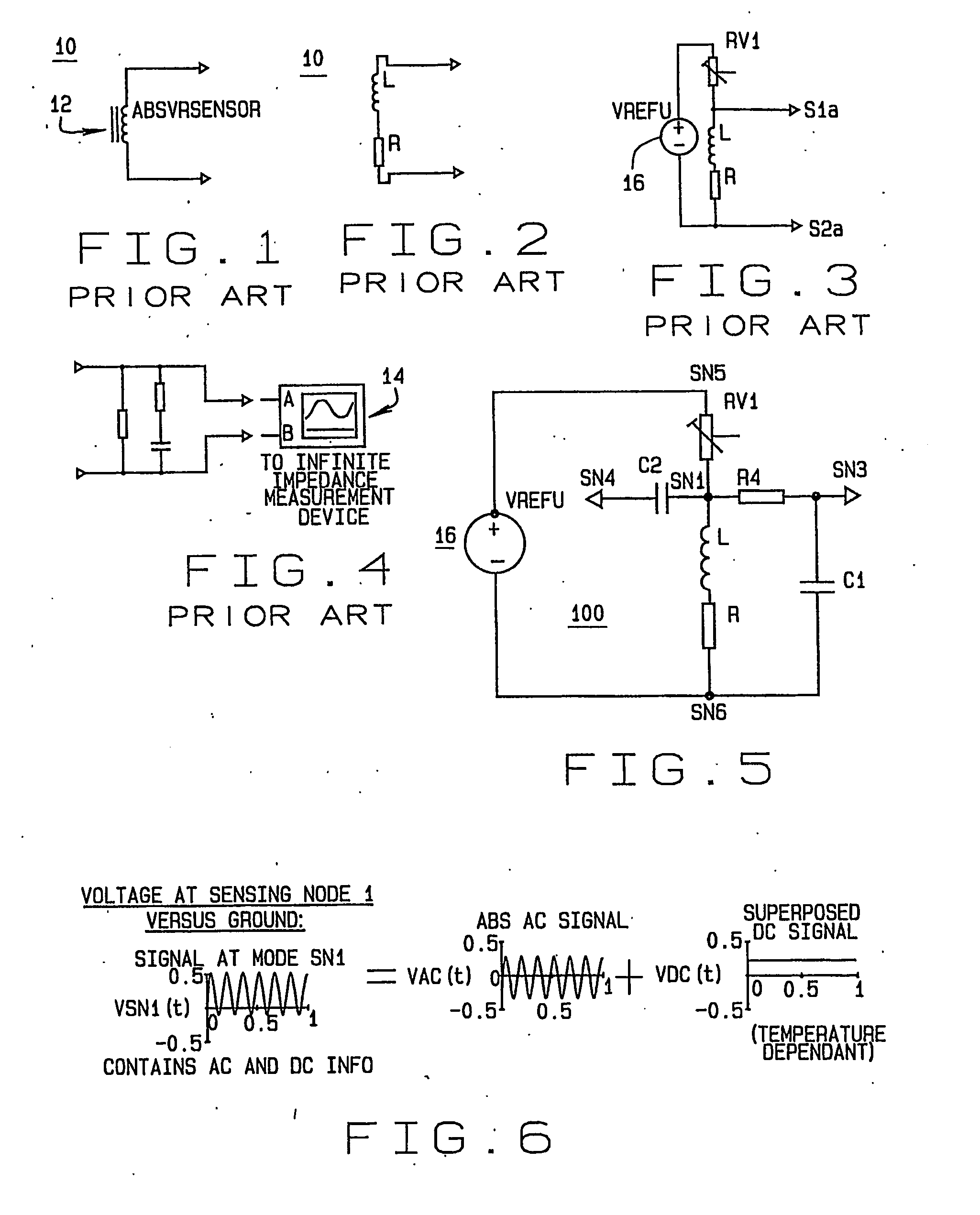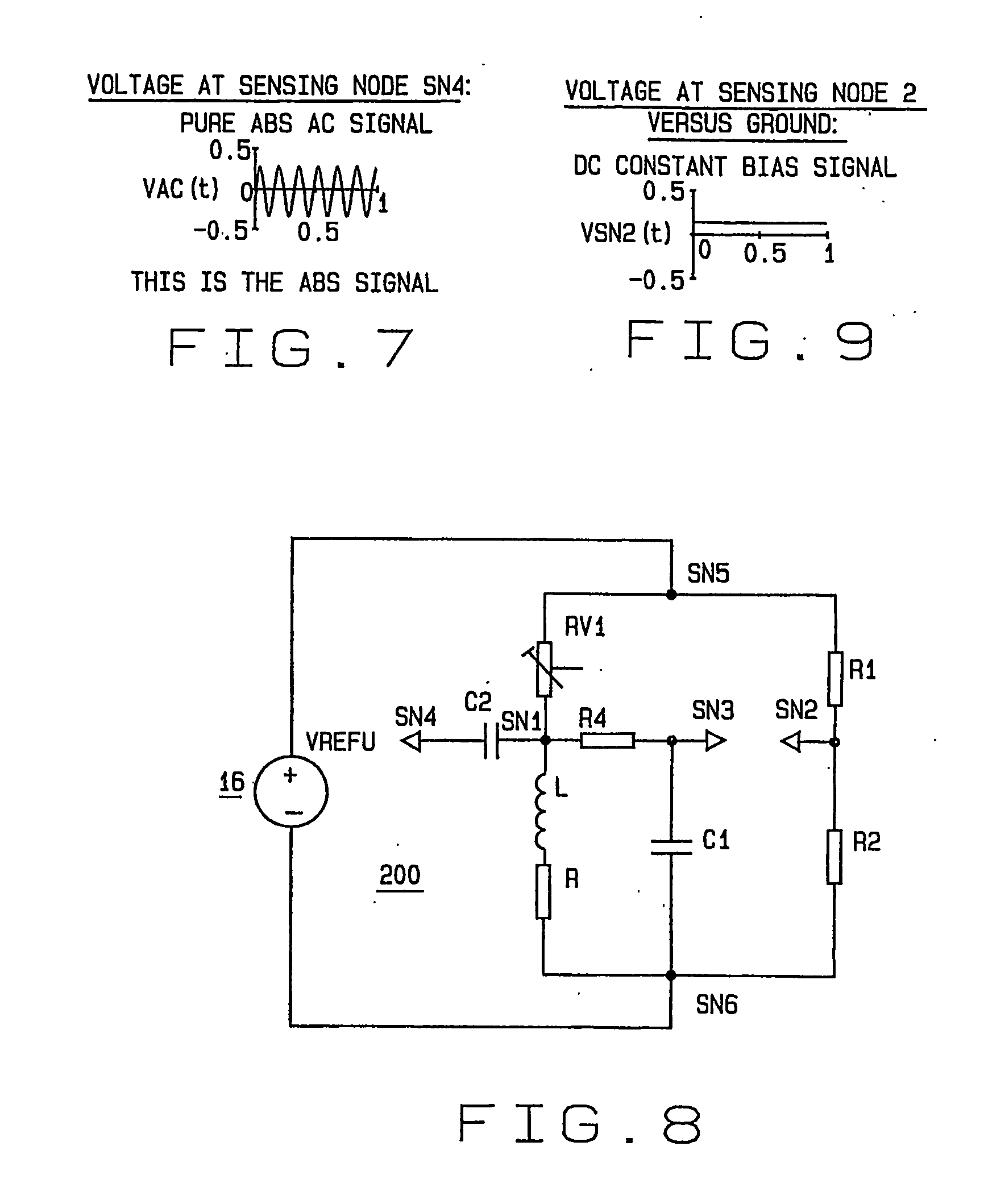Rotation sensor with temperature measuring feature
- Summary
- Abstract
- Description
- Claims
- Application Information
AI Technical Summary
Benefits of technology
Problems solved by technology
Method used
Image
Examples
embodiment 100
[0035] Turning to FIG. 5, in an embodiment 100 of the present invention, the voltage signals at sensing node SN1, shown in FIG. 6, represent a superposition of the DC temperature dependant signal and the AC in the coil induced voltage. To analyze and use both pieces of information, each signal is separated to provide a pure DC signal to analyze the sensor coil temperature and a pure AC signal to feed the ABS ECU. Components used to separate the superimposed AC voltage (ABS information) from the DC voltage (temperature information) at node SN1 define two filters. The first filter, consisting of resistor R4 coupled between nodes SN1 and SN3, and a capacitor C1 coupled between nodes SN3 and SN6, provides a pure DC voltage, independent from the alternating current ABS signal. The pure DC voltage signal is representative of only the temperature information.
[0036] A second filter consisting of a second capacitor C2 provides a pure AC signal between nodes SN4 and SN1, as shown in FIG. 7. T...
embodiment 200
[0037] An alternate embodiment 200 of the present invention is shown in FIG. 8. A second branch with a pair of resistors R1 and R2 is added in parallel with the voltage source 16, forming a Wheatstone bridge configuration with the variable reluctance sensor (R and L) and the resistor RV1 in a first branch, and resistors R1 and R2 in a second branch. The Wheatstone bridge wiring circuit provides the ability to establish a DC bias signal, shown in FIG. 9, for the temperature information circuit. Resistors R1, R2, and RV1 can be selected to obtain a DC voltage signal of a specific value for a specific temperature of the sensor resistor R. When the circuit 200 is used to measure the temperature of a wheel bearing or other component, the bias permits the DC voltage signals to be adjusted to obtain a 0.0 mV output at a temperature of either 0° C. or 0° F. when the temperature signal is extracted between nodes SN3 and SN2, as shown in FIG. 10. Those of ordinary skill in the art will recogn...
embodiment 300
[0039] In an alternate embodiment 300, shown in FIG. 12, an additional circuit branch is inserted between SN2 and SN6. The additional circuit branch includes resistor R4BIS and capacitor C1BIS to improve signal quality at node SN2new between resistor R4BIS and capacitor C1BIS during the switch-on phase of voltage reference 16.
PUM
 Login to View More
Login to View More Abstract
Description
Claims
Application Information
 Login to View More
Login to View More - R&D
- Intellectual Property
- Life Sciences
- Materials
- Tech Scout
- Unparalleled Data Quality
- Higher Quality Content
- 60% Fewer Hallucinations
Browse by: Latest US Patents, China's latest patents, Technical Efficacy Thesaurus, Application Domain, Technology Topic, Popular Technical Reports.
© 2025 PatSnap. All rights reserved.Legal|Privacy policy|Modern Slavery Act Transparency Statement|Sitemap|About US| Contact US: help@patsnap.com



